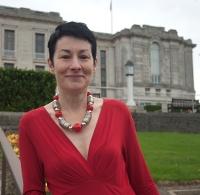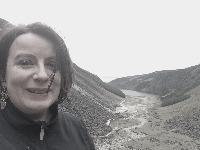Blog
Unless otherwise stated, content is shared under CC-BY-NC Licence
Max Communications - AIP Query Builder & Tagging
Tim Schofield is a Senior Developer for Max Communications.
Max are working with Imperial College London Archives and Corporate Records Unit (ICL ACRU) digitally preserving their documentation. We use Archivematica for digital preservation in tandem with AtoM as an access system.
The project set out to improve Archivematica’s reporting ability by developing an in-house QueryBuilder utility. The QueryBuilder enables the user to create compound queries and interrogate Archivematica’s database. For instance, searches can be run returning all packages created within a particular date-range, or packages over a certain size, or created by a particular user.
What is data integrity?
Matthew Addis is Co-Founder and CTO of Arkivum based in the UK.
What do we mean when we talk about data integrity? What is data integrity and why is it an important part of digital preservation? Data integrity means different things to different people. If you ask the question to an IT professional, compliance officer, corporate archivist, research librarian, or curator of a special collection then you will typically get very different answers. What we mean by data integrity depends on what we mean by data, how and why that data exists, and most importantly who’s using it and for what purpose. There is no single answer. But in all cases, digital preservation has a role to play in achieving data integrity, and that makes life in the digital preservation world both challenging and interesting!
WDPD 2020 - NRS Blog - Response to Covid-19
Authors: Lynn Bruce, Web Archivist; Laura Gould, Government Records Archivist; Barbara Fuentes, Web Continuity Assistant; Joanne Watson, Digital Capacity Planning Lead & Garth Stewart, Head of Digital Records Unit from the National Records of Scotland.
Introduction
In a year like no other, so many aspects of our society have changed in the wake of Covid-19; how we work, how we play, how we govern, how we live.
At the pandemic’s onset, National Records of Scotland - as keeper of Scotland’s national archive, set out to ensure that we captured a record of the unprecedented changes facing Scotland’s government and public health administrations. This required bundles of energy, focus, and engagement by colleagues, which at times significantly tested our resilience. We’ve adapted admirably to this challenge: read on to explore our key successes and thoughts on the future.
Keeping the Good for Good: Preserving the Laws of Hywel Dda at the National Library of Wales
Sally McInnes is Head of Unique Collections and Collections Care at the National Library of Wales.
When Sarah Middleton announced that the theme of this year’s World Digital Preservation Day was Digits: for Good, I could not resist the chance to talk about the Library’s approach to preserving one of Wales’s most iconic manuscripts, namely the Boston Manuscript of the Laws of Hywel Dda (the Good). The Library has combined innovative approaches in traditional conservation, digitisation and digital preservation to ensure that these Welsh Laws are accessible now and in the future.
The Boston Manuscript was purchased in 2012 by the Library with assistance from the Lottery Heritage Fund, the Friends of the National Libraries and the Welsh Government. The manuscript, written in Welsh, dates from around 1350 and records the native Welsh laws, which were thought to have been codified by Hywel Dda. It is a key text in the history of Welsh law and provides insights into Welsh identify and cultural life. It was used as a working text, being annotated by a Judge in South Wales, who carried it around in his pocket. By the 19th century, the manuscript had reached America and was in the custody of the Massachusetts Historical Society in Boston, having probably been taken across the Atlantic by an emigrant.
Three Copy Nirvana? A Climb into the Clouds
Lee Hibberd is the Digital Preservation Manager at the National Library of Scotland.
For more than a decade the National Library of Scotland has been on a journey to achieve one of the digital preservation fundamentals – safe storage. In October 2020, and for the very first time, we achieved our goal of keeping 3 copies of our preservation data. To mark the coincidence of this result with World Digital Preservation Day I’d like to share the ups and downs of the climb with you - from the foothills to the clouds.
Between 2000 and 2010 the National Library of Scotland had an established Digital Preservation Programme, was purchasing digital content and collecting Scottish websites and personal archives with digital bits attached. Growth was manageable and routine – one copy lived on networked disk storage, and another on back-up LTO tape. We were early and full members of the Digital Preservation Coalition and had attended our fair share of training but data losses remained as words on a PowerPoint slide. It wasn’t long before the theory became personal.
Digits: For Good – Black History Month at Lloyds Banking Group
Peter Judge is an Archivist at Group Archives & Museum (Lloyds), Group Corporate Affairs
Lloyds Banking Group Archives hold very few records about race and ethnicity. During previous Black History Months, we have been asked for stories about black colleagues that could be shared as part of the celebrations, but by going through material in the archive we quickly realised that conversations around race and ethnicity didn’t start in the Group until the 21st century. So this year we took the opportunity to join the Group’s Black History Month working party and create a bank of stories that will illustrate for future researchers one small part of the black experience in the U.K., in a year when capturing these stories feels more important than ever. It is through our use of the digital preservation platform Preservica that we aim to keep these stories accessible for future generations.
Amplifying Change: Stories of Change from Irish History
Bláithín Ní Chatháin is a Historical researcher and oral historian, Atlantic Philanthropies Archival Project at the Digital Repository of Ireland.
‘Amplifying change: A history of the Atlantic Philanthropies on the island of Ireland’ is a collaborative project between the Digital Repository of Ireland (DRI) based in Dublin and the Division of Rare and Manuscript Collections (RMC) at Cornell University Library, New York. The ‘Amplifying Change’ team based at DRI was granted access to the Atlantic Philanthropies Archive housed at RMC, enabling DRI to play a role in providing persistent access to grant documents and in contextualising the stories that surround significant social and cultural change with newly collected oral histories. The collaboration aims to build and disseminate a vibrant, sustainable, and openly accessible digital archive and online exhibition of the impact of the Atlantic Philanthropies grantees on the island of Ireland, consisting of select business records and new oral histories, that reflect Atlantic’s grant making philosophy, approach and impact in the Republic of Ireland and Northern Ireland.
‘DIY’ Digital Preservation: A Collaborative Trainee Project on Personal Digital Archiving
Jacob Bickford, Erin Liu, Ellie Peng, Ash Ullah are Bridging the Digital Gap trainees with The National Archives.
We are four Bridging the Digital Gap trainees employed by The National Archives (funded by the National Lottery Heritage Fund) and seconded across four host institutions: University of the Arts London, London Metropolitan Archives, Transport for London Corporate Archives and University of Westminster. The traineeship scheme is designed to bring our digital capabilities to the archives sector whilst developing our skills in various aspects of archival practice.
Whilst forming our proposal for a collaborative cross-institutional project, we were cognisant of our position as trainees working in archives that sit within comparatively larger organisations, bodies with resources to support the hosting and operation of purpose-built digital preservation systems. We wondered where newcomers (like ourselves), ‘non-specialist’ practitioners and/or those without a massive budget sat in relation to this digital preservation landscape, which could appear resource-intensive and technically complex. We were keen to explore how digital preservation tools can be approached as readily as any other everyday DIY tool, since the practices of creating, storing, keeping and sharing material are intuitive and necessary to all.
Bit by bit
Rachel MacGregor is a Digital Preservation Officer at the Modern Records Centre, University of Warwick.
26th March 2020 – I was just finishing my first full week of working from home (I’m still here) and it felt very far from normal, particularly because I should have been in Dublin speaking to colleagues from the Archives and Records Association Ireland about digital preservation. I had been really looking forward to my trip there not least because it’s a city I’d like to see more of having only been once before. That will have to wait for the time being (although Dublin – you have been warned!).
Hopes and dreams of the 2020 DPC Fellow
Micky Lindlar is Digital Preservation Team Leader at Technische Informationsbibliothek (TIB) in Germany and recipient of the Digital Preservation Awards 2020 DPC Fellowship.
Dear Judges,
Dear DPC,
Dear digital preservationists world wide,
Dear colleagues and friends,
Digital preservation is mostly done in the dark. Like a lifeguard in a sea of bits and bytes we ensure that all stay afloat, we take precautions, we rescue when needed, we raise a warning finger at unsuitable gear. Our job is to create and maintain safe environments where data lives – lives to be used by others. The digital preservation awards is one of the rare occasions where the work in the dark is put into the spotlight to be seen and recognized. Praise by your peers is the highest form there is and I feel very honored to receive the DPC Fellowship.





















































































































































